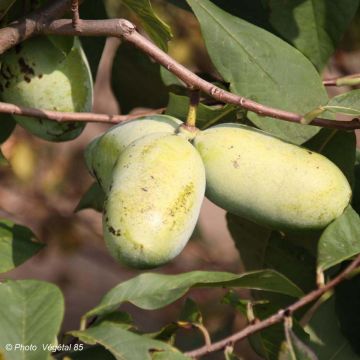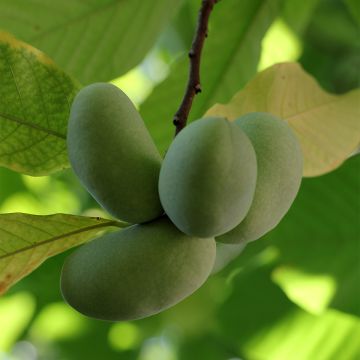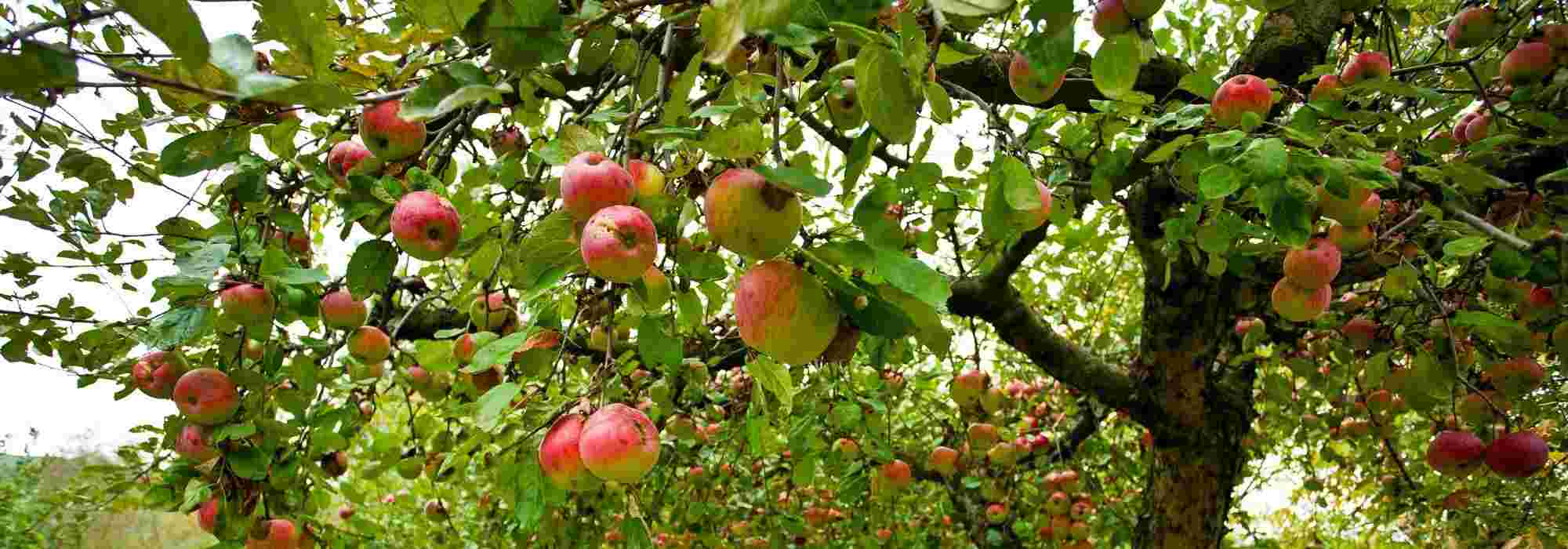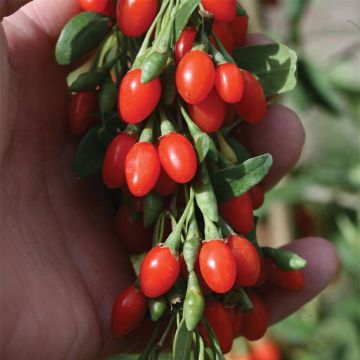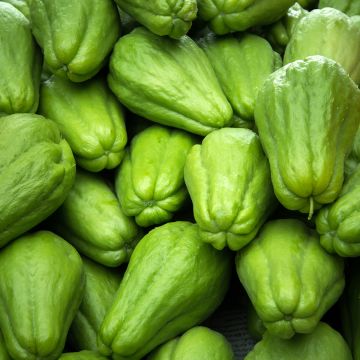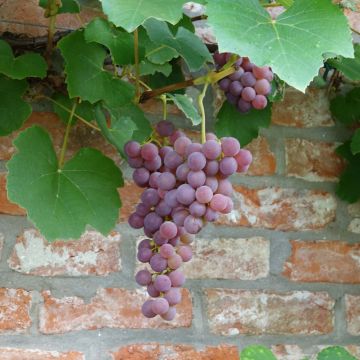

Annona cherimola


Annona cherimola
Annona cherimola
Annona cherimola
Cherimoya, Custard Apple
Special offer!
Receive a €20 voucher for any order over €90 (excluding delivery costs, credit notes, and plastic-free options)!
1- Add your favorite plants to your cart.
2- Once you have reached €90, confirm your order (you can even choose the delivery date!).
3- As soon as your order is shipped, you will receive an email containing your voucher code, valid for 3 months (90 days).
Your voucher is unique and can only be used once, for any order with a minimum value of €20, excluding delivery costs.
Can be combined with other current offers, non-divisible and non-refundable.
Why not try an alternative variety in stock?
View all →This plant carries a 6 months recovery warranty
More information
We guarantee the quality of our plants for a full growing cycle, and will replace at our expense any plant that fails to recover under normal climatic and planting conditions.
Description
The Annona cherimola or Cherimoya tree is a bush native to South America, sensitive to frost and cultivated in tropical and subtropical areas for its delicious fruits. This evergreen, medium-sized plant has an upright and wide habit, adorned with beautiful dark green foliage. It bears fruit reasonably quickly after 3 to 4 years of planting. The fruits are about the size of an apple, heart-shaped, with green skin and sweet white flesh. A long summer is necessary for them to ripen, which, combined with their low hardiness, limits planting possibilities to the mildest areas of the Mediterranean coast. Elsewhere, it should be treated as a conservatory plant and grown in containers to be brought indoors in winter.
The Cherimoya tree is a member of the Annonaceae family, which includes about a hundred genera and around 2500 species, including the Asimina triloba, or Paw Paw, a hardy fruit tree in our climates, and the Ylang-Ylang, a strictly tropical tree whose yellow flowers with their enchanting fragrance are used in perfumery. The Annona genus comprises more than 120 species, some of which produce fruits consumed in the tropics (cinnamon apple, soursop, beef heart...).
The Cherimoya tree, or Annona cherimola, thrives in its natural habitat in the Andes Mountains in Peru, Bolivia, and Ecuador. It's a testament to its adaptability; it can grow at altitudes ranging from 1300 to 2600 m. This tree flourishes in a montane tropical climate, with a relatively small annual temperature range, from about 10°C to 30°C. In these conditions, it forms a bush or small tree that can reach a height of about 7 to 9 m, with a short trunk that often branches out from the base. It has an upright habit, with branches reaching the sky and a broad spreading crown. The foliage is generally evergreen, although in some climates, it grows naturally in the Andes Mountains in Peru, Bolivia, and Ecuador, at altitudes ranging from 1300 to 2600 m. It therefore thrives in a mountainous tropical climate, characterised by a relatively small annual temperature range, from about 10°C to 30°C. In these conditions, it forms a bush or small tree that can reach a height of about 7 to 9 m, with a short trunk that often branches out from the base. It has an upright habit, with branches reaching towards the sky and a wide-spreading crown. The foliage is generally evergreen, although, in some climates, it may briefly become deciduous during the year.
Being able to tolerate only light and brief frosts, it is cultivated in subtropical areas, especially in mild Mediterranean regions such as Israel, Italy, and Spain, on the "Costa Tropical" (the southern coastal area between Motril and Malaga). In this privileged Andalusian micro-region, the 'Fino de Jete' variety is mainly grown, as it is slightly more frost-resistant (down to approximately -4°C for a well-established plant, but young plants die at 0°C). In these orchards, it is trained as a small tree with a short and relatively thick trunk supporting a wider-than-tall crown. The plant reaches a height of approximately 4 m with a spread of 5 m or slightly more. The dense vegetation forms a compact dome consisting of branches covered with medium to dark green, somewhat glossy oval leaves, 8 to 12 cm long and 4 to 6 cm wide for the most part. Positioned alternately on the branches and hanging almost vertically, they give the plant a very characteristic silhouette. The spring flowers have six petals and are greenish-yellow in colour. They are hermaphroditic (possessing both male and female organs), but the pollen (male) matures one day after the pistil (female). That is why manual pollination is carried out in orchards, allowing for more regular fruit sizes. Fruiting occurs over a long autumn and winter period, as the fruit ripens within 5 to 8 months. The cultivated fruit is roughly the size of an apple, with a heart-shaped morphology. In their natural habitat in South America, the fruits have much more heterogeneous dimensions, measuring from 8 cm to 20 cm long and weighing 150 g to 1 kg. The green skin is reticulated, appearing to have scales, while the flesh is white. The fruit can be stored for a long time in cold conditions if picked before ripening, but once exposed to air, it ripens extremely quickly, going from firm to soft in 1 to 3 days (especially in warm weather). Its texture is often described as intermediate between fresh cream and a ripe banana, so it is usually eaten with a spoon. As is frequently the case with exotic fruits, the fruit is tasty and sweet, but its taste is difficult to describe, with some hints of strawberry, pineapple, mango, vanilla, banana... What is certain is that it is rich in nutrients, vitamins, potassium, and fibre. It contains almost black seeds, which are easy to spit out while eating.
The Cherimoya tree can be grown in the ground in warmer climates. Indeed, in addition to being frost-sensitive, it does not like wind or excessively high temperatures, which limits its potential for cultivation. In other areas, you can grow it in containers and prune it at the end of winter to keep it at 2 m or 2.5 m, making it easier to overwinter in a cold greenhouse. You can accompany it with other conservatory plants, such as the Citrus x meyeri (Meyer Lemon tree), which produces immense fruits with less acidity than traditional lemons. You can also surprise your friends with the tree tomato (Cyphomandra betacea 'Red Tamarillo'), another frost-sensitive bush with curious red fruits shaped like small eggs and delicately acidic flesh.
Annona cherimola in pictures


Plant habit
Fruit
Flowering
Foliage
Botanical data
Annona
cherimola
Annonaceae
Cherimoya, Custard Apple
South America
Other Asimina trees
View all →Planting and care
Cultivating the Cherimoya tree in open ground is reserved for the mildest areas of the Mediterranean coast. Indeed, not only is the plant frost-sensitive, tolerating only low-intensity frosts (-2°C to -4°C for a well-rooted bush), but it also cannot withstand high temperatures (beyond 40°C). The Cherimoya tree requires a humus-bearing, moist soil that is well-drained and prefers sunny exposures. Additionally, it needs to be sheltered from the wind and requires a long summer period to bear fruit, excluding the midrib coast's microclimates.
Therefore, in most regions, it should be planted in a container to be protected from frost in a cold greenhouse. Unless you have a professional greenhouse with a high ceiling and handling equipment suitable for heavy loads, you will need to opt for a reasonably sized container (around a hundred litres) with standard planting soil and place a layer of gravel at the bottom for drainage. At the end of the fruiting period (early spring), the plant must be pruned to keep it at manageable proportions (2m to 2.50m in height).
Planting period
Intended location
Care
Planting & care advice
This item has not been reviewed yet - be the first to leave a review about it.
Similar products
Haven't found what you were looking for?
Hardiness is the lowest winter temperature a plant can endure without suffering serious damage or even dying. However, hardiness is affected by location (a sheltered area, such as a patio), protection (winter cover) and soil type (hardiness is improved by well-drained soil).

Photo Sharing Terms & Conditions
In order to encourage gardeners to interact and share their experiences, Promesse de fleurs offers various media enabling content to be uploaded onto its Site - in particular via the ‘Photo sharing’ module.
The User agrees to refrain from:
- Posting any content that is illegal, prejudicial, insulting, racist, inciteful to hatred, revisionist, contrary to public decency, that infringes on privacy or on the privacy rights of third parties, in particular the publicity rights of persons and goods, intellectual property rights, or the right to privacy.
- Submitting content on behalf of a third party;
- Impersonate the identity of a third party and/or publish any personal information about a third party;
In general, the User undertakes to refrain from any unethical behaviour.
All Content (in particular text, comments, files, images, photos, videos, creative works, etc.), which may be subject to property or intellectual property rights, image or other private rights, shall remain the property of the User, subject to the limited rights granted by the terms of the licence granted by Promesse de fleurs as stated below. Users are at liberty to publish or not to publish such Content on the Site, notably via the ‘Photo Sharing’ facility, and accept that this Content shall be made public and freely accessible, notably on the Internet.
Users further acknowledge, undertake to have ,and guarantee that they hold all necessary rights and permissions to publish such material on the Site, in particular with regard to the legislation in force pertaining to any privacy, property, intellectual property, image, or contractual rights, or rights of any other nature. By publishing such Content on the Site, Users acknowledge accepting full liability as publishers of the Content within the meaning of the law, and grant Promesse de fleurs, free of charge, an inclusive, worldwide licence for the said Content for the entire duration of its publication, including all reproduction, representation, up/downloading, displaying, performing, transmission, and storage rights.
Users also grant permission for their name to be linked to the Content and accept that this link may not always be made available.
By engaging in posting material, Users consent to their Content becoming automatically accessible on the Internet, in particular on other sites and/or blogs and/or web pages of the Promesse de fleurs site, including in particular social pages and the Promesse de fleurs catalogue.
Users may secure the removal of entrusted content free of charge by issuing a simple request via our contact form.
The flowering period indicated on our website applies to countries and regions located in USDA zone 8 (France, the United Kingdom, Ireland, the Netherlands, etc.)
It will vary according to where you live:
- In zones 9 to 10 (Italy, Spain, Greece, etc.), flowering will occur about 2 to 4 weeks earlier.
- In zones 6 to 7 (Germany, Poland, Slovenia, and lower mountainous regions), flowering will be delayed by 2 to 3 weeks.
- In zone 5 (Central Europe, Scandinavia), blooming will be delayed by 3 to 5 weeks.
In temperate climates, pruning of spring-flowering shrubs (forsythia, spireas, etc.) should be done just after flowering.
Pruning of summer-flowering shrubs (Indian Lilac, Perovskia, etc.) can be done in winter or spring.
In cold regions as well as with frost-sensitive plants, avoid pruning too early when severe frosts may still occur.
The planting period indicated on our website applies to countries and regions located in USDA zone 8 (France, United Kingdom, Ireland, Netherlands).
It will vary according to where you live:
- In Mediterranean zones (Marseille, Madrid, Milan, etc.), autumn and winter are the best planting periods.
- In continental zones (Strasbourg, Munich, Vienna, etc.), delay planting by 2 to 3 weeks in spring and bring it forward by 2 to 4 weeks in autumn.
- In mountainous regions (the Alps, Pyrenees, Carpathians, etc.), it is best to plant in late spring (May-June) or late summer (August-September).
The harvesting period indicated on our website applies to countries and regions in USDA zone 8 (France, England, Ireland, the Netherlands).
In colder areas (Scandinavia, Poland, Austria...) fruit and vegetable harvests are likely to be delayed by 3-4 weeks.
In warmer areas (Italy, Spain, Greece, etc.), harvesting will probably take place earlier, depending on weather conditions.
The sowing periods indicated on our website apply to countries and regions within USDA Zone 8 (France, UK, Ireland, Netherlands).
In colder areas (Scandinavia, Poland, Austria...), delay any outdoor sowing by 3-4 weeks, or sow under glass.
In warmer climes (Italy, Spain, Greece, etc.), bring outdoor sowing forward by a few weeks.
































